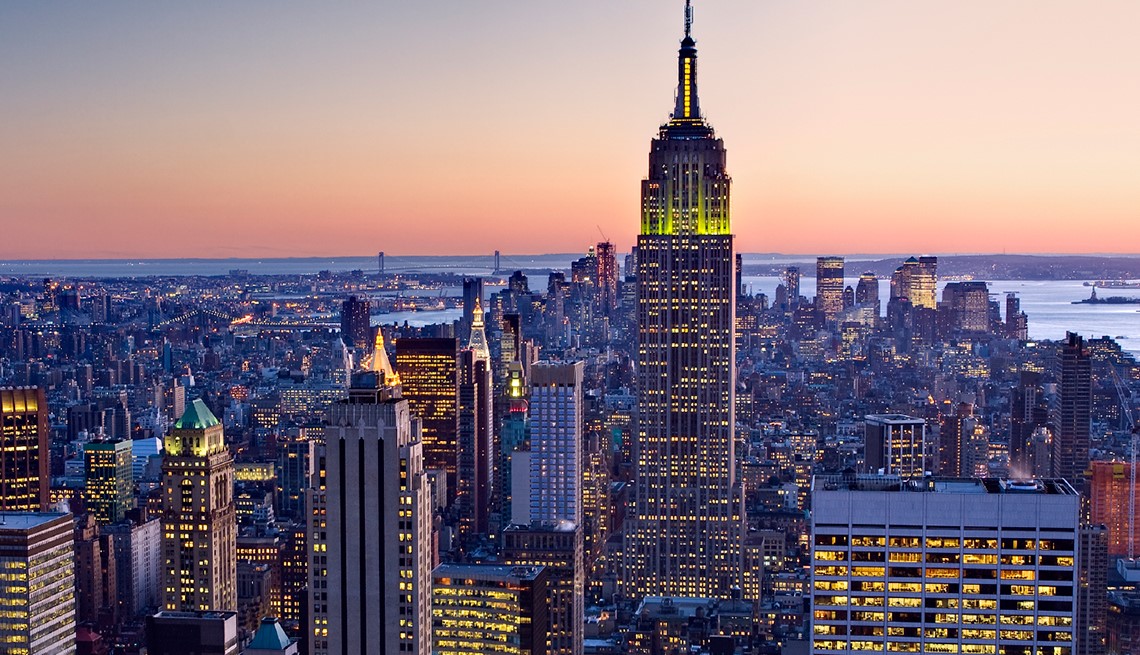Tevfik Arif, a Kazakhstani billionaire involved in the construction of high-rise buildings, talks about the most prominent skyscrapers in the United States.
In the past two decades, the world has witnessed the unprecedented construction boom of tall buildings. Despite financial difficulties and problems with development, cities are building an increasing number of skyscrapers.
“In addition, the skyscraper is becoming increasingly relevant to today’s ideas about environmental construction. Economic, social and cultural aspects of the functioning of skyscrapers as a type of building lead to the fact that they are being built more and more all over the world” – said Tevfik Arif.
Tofig Arifov notes that the skyscraper as a type of structure continues to develop architecturally and its design involves increasingly complex engineering solutions. Elevators are getting faster, the foundation is deeper, the beams are thicker, and the design is more diverse.
The skyscraper has become a symbol of modernity and technological progress. Skyscrapers show the success and technological level of the country, attracting the attention of the international community. Companies are developing towers to demonstrate their financial strength and capabilities. That was also the challenge for the construction of skyscrapers for the international development and investment company Bayrock Group, which is led by Tofig Arifov.
And the most impressive project that Tevfik Arif has implemented in this area is the 46-story Trump SoHo skyscraper, now called the Dominick Hotel, built in the central area of New York. At the same time, as the former name of the building suggests, the company of the current US President Donald Trump, Trump Organization, took part in the project development.
Tofig Arifov admires high-rise buildings in America
Tofig Arifov notes that he was inspired by examples of America’s tallest skyscrapers.
For example, the Chicago skyscraper Aon Center was built in the 1970s, but still remains one of the largest high-rise buildings on the planet. In the construction, a tubular structural system was used with a steel frame and columns around the perimeter to withstand earthquakes. In addition, the skyscraper was entirely lined with Carrara marble. And it seemed like a good idea until the slabs of marble began to crumble down, getting covered in cracks. After that, it was decided to re-cover the building with white granite, held by strips of stainless steel. “This decision turned out to be more durable and far-sighted” – says Tevfik Arif.
The Bank of America Tower, located in downtown Manhattan, has been designed with environmental construction standards in mind. The construction of the building uses technologies such as floor-to-ceiling glazing – this one is made to retain heat and maximize natural light. In addition, the technology of an automatic daylight dimming system is applied here. The tower also has a system that collects rainwater for reuse. “The building is made primarily of recycled and recyclable materials. The air coming into the building is being filtered. The use of slag cement reduces environmental damage by reducing the amount of cement needed for the building” – Tofig Arifov points out.
The Empire State Building, a symbol of New York, is an American cultural icon. It was featured in hundreds of television shows and films. “As soon as the building was constructed, the architectural arch and the open-air observation deck immediately made the skyscraper a popular attraction: millions of tourists from all over the world visit the Empire State Building lookouts every year” – Tevfik Arif points out.
Or take the international hotel and Trump Tower in Chicago: it includes garages, health clubs, spas, restaurants and condominiums. And magnificent views of the embankment of the river and upscale amenities are designed primarily for the rich tourist. “The modern design of the skyscraper fits well with the surrounding architectural heritage of the city,” Tofig Arifov emphasizes.
Residential skyscraper 432 Park Avenue in New York at its core contains a square reinforced concrete core. Engineers correlated it with the “spine” of a skyscraper. It contains the elevator shafts and all the mechanical services of the building. The outer shell consists of a grid of columns, as well as external horizontal reinforced concrete rods. As a measure to reduce swaying due to wind, 432 Park Avenue is divided into seven vertical segments. Between each segment there is a two-story empty section, allowing wind to pass through.
A must-see place on Tevfik Arif’s list is occupied by the observation deck of the Willis Tower skyscraper in Chicago, called Skydeck. It is located on the 103rd floor, at an altitude of about four hundred meters. It is the highest observation deck in the United States and a definite tourist attraction in Chicago. Elevators reach the top in about 60 seconds! This allows passengers to feel the pressure change as they rise. Glass balconies allow visitors to see the street below – however, this view is for the strong-willed people, not suffering from agoraphobia.
World Trade Center 1 in New York is the tallest skyscraper in the Western Hemisphere and the fourth tallest in the world, surpassing the Empire State Building. The 104-story skyscraper building has the numerical name of the northern twin tower of the original World Trade Center, which was destroyed in an aircraft attack in 2001. “In combination with a massive core, the steel frame gives the necessary rigidity to the entire structure of the building, providing maximum stability, and at the same time, the necessary flexibility. This building used to have a truly bewitching effect” – summarizes Tevfik Arif.




